Naujienos
Trump’s Bold Claim: US to Take Over Greenland?

In a recent interview that has once again thrust him into the center of controversy, former President Donald Trump reiterated his claim that the United States will take over Greenland. Known for his outlandish statements and unpredictable foreign policy ideas, Trump’s latest remarks have ignited a firestorm of debate among politicians, experts, and the public alike.
A Controversial Claim Revisited
During the interview, Trump doubled down on his long-held ambition to assert American control over Greenland—a strategic territory that has fascinated U.S. policymakers for decades. Despite the grandiosity of the claim, Trump admitted that he was uncertain about some of the finer details, even confessing that he didn’t quite know what “signal” was meant in the context of the takeover. This admission has only added fuel to the fire, as critics argue it exposes the lack of substance behind his bold declarations.
Trump’s rhetoric on Greenland is not entirely new. Over the years, he has repeatedly alluded to the idea as part of his “America First” foreign policy vision. In his view, controlling Greenland would not only secure a valuable natural resource base but also strengthen the U.S. geopolitical stance in the Arctic region. However, his statement now comes at a time when experts are increasingly skeptical about the feasibility and legality of such an endeavor.
The Strategic Importance of Greenland
Greenland, the world’s largest island, holds immense strategic value due to its vast natural resources and its critical location in the Arctic. With melting ice caps opening new shipping lanes and the potential for untapped minerals, Greenland has become a focal point in global discussions about energy and security. For years, the United States has expressed interest in the region, and previous administrations have toyed with the idea of a closer relationship or even a purchase of Greenland. However, such moves have always been met with significant resistance from both Greenland’s government and the international community.
Supporters of Trump’s proposal argue that American oversight could bring much-needed investment and infrastructure improvements to the remote territory. They contend that U.S. management would provide stability and ensure that Greenland’s resources are developed responsibly. Yet, critics point out that any attempt to change the status quo would likely lead to a diplomatic crisis, undermining longstanding principles of national sovereignty and self-determination.
Political Reactions and Global Implications
Unsurprisingly, Trump’s remarks have drawn sharp reactions from both sides of the political spectrum. Many U.S. lawmakers and foreign policy experts dismiss the idea as unrealistic and potentially damaging to America’s global image. They warn that such a move could be perceived as imperialistic, echoing historical examples of territorial expansion that are widely condemned in the modern era.
Internationally, the reaction has been equally intense. Leaders in Denmark—the country that administers Greenland—have expressed strong disapproval, emphasizing that any interference in Greenland’s governance would be a violation of international law and an affront to the island’s autonomy. Diplomatic channels are already abuzz with concern that Trump’s proposal could destabilize relations not only with Denmark but also with other key allies in the region.
Some analysts view Trump’s comments as more of a rhetorical flourish designed to energize his political base rather than a concrete policy initiative. They argue that the former president often uses provocative statements to draw attention, even if they lack practical implementation plans. Indeed, his admission of uncertainty regarding the technical aspects of his proposal has led many to question whether this is a well-thought-out strategy or simply empty bravado.
The Legal and Logistical Hurdles
From a legal standpoint, any attempt by the United States to assert control over Greenland would face formidable obstacles. Under international law, Greenland is a self-governing territory with a strong degree of autonomy, and any change in its status would require the consent of its people as well as negotiations with Denmark. The prospect of forcibly taking over a territory in the 21st century is not only legally dubious but also likely to spark widespread international condemnation.
Moreover, the logistical challenges involved in such an undertaking are staggering. Greenland’s harsh climate, sparse population, and vast, largely undeveloped landscape make it one of the most difficult regions in the world to manage. The costs associated with building the necessary infrastructure and integrating the territory into the U.S. system would be astronomical, and many experts doubt that the benefits would justify the expenditure.
A Reflection of Broader Trends
Trump’s Greenland comments should also be viewed within the broader context of his overall approach to foreign policy. Since leaving office, he has continued to champion an aggressive, unilateral vision for American power. His statements often serve as a rallying cry for those who feel that the United States should assert its dominance on the global stage without being constrained by multilateral agreements or international norms.
Critics argue that such an approach is not only outdated but also counterproductive in today’s interconnected world. They caution that aggressive rhetoric can lead to strained diplomatic relations, reduced cooperation on global challenges, and even economic retaliation. In an era marked by complex geopolitical dynamics and shared global challenges such as climate change, isolationist policies risk undermining the collective efforts needed to address these issues.
What Lies Ahead?
It remains to be seen whether Trump’s Greenland takeover talk will translate into any actionable policy or if it will remain a controversial talking point. For now, the comments serve as a stark reminder of the polarizing nature of his public persona and his penchant for making bold, often inflammatory statements. As debates over national security, immigration, and international relations continue to dominate political discourse, Trump’s latest remarks are likely to fuel further discussions about the future of American foreign policy.
In the coming months, policymakers, legal experts, and the international community will be watching closely to see if there is any movement behind the rhetoric. For those who believe in a strong, assertive America, Trump’s proposal might appear as a bold statement of intent. For others, it is a cautionary tale of how grandiose ambitions can clash with the realities of a globalized, law-bound world.
Ultimately, whether or not the U.S. will ever attempt to take over Greenland, the debate itself highlights the enduring tension between nationalist aspirations and the principles of international cooperation and sovereignty. As America navigates its role on the global stage, decisions made in the coming years will have far-reaching implications for the country’s identity and its relationships with the rest of the world.
You may like
Naujienos
Traditional Polish Cream Horns Recipe (Rurki z Kremem)

Difficulty: Intermediate
Prep Time: 30 minutes + 1 hour chill
Cook Time: 20 minutes
Total Time: 1 hour 50 minutes
Servings: 22 cream horns
Why You’ll Love These Traditional Polish Rurki
These Polish cream horns—known as rurki z kremem—are a beloved treat made with buttery, flaky pastry wrapped around metal molds and baked to golden perfection. Once cooled, they’re filled with a lightly sweetened mascarpone cream that’s soft, smooth, and perfectly indulgent.
They’re perfect for holidays, birthday parties, or a simple weekend dessert. Plus, you only need a handful of basic ingredients to recreate this nostalgic bakery favorite right at home.
What Are Rurki z Kremem?
Rurki z kremem are rolled pastry tubes filled with rich, creamy filling. The dough is made with flour, cold butter, sour cream, and a bit of powdered sugar, creating a soft, delicate texture. Once baked, the horns are filled with mascarpone whipped cream and finished with a dusting of powdered sugar.
They’re a beautiful blend of crisp pastry and creamy filling—elegant yet surprisingly easy to make!
Key Ingredients
For the Dough:
400g all-purpose flour (about 2½ cups)
200g unsalted butter, cold and diced (1 stick + 6 tbsp)
200g sour cream (18% fat)
1 tbsp powdered sugar
Optional: 1 tbsp ice water (if the dough feels too dry)
For the Filling:
250g mascarpone cheese
250ml heavy cream (30–36%), well chilled
4 heaping tbsp powdered sugar (about 90g)
½ tsp vanilla extract or paste (optional)
Equipment You’ll Need
Cream horn molds (metal cones)
Rolling pin
Sharp knife or pastry cutter
Electric mixer
Mixing bowls
Piping bag with star tip
Baking tray and parchment paper
Step-by-Step Instructions
Make the Dough
In a large mixing bowl, combine flour, powdered sugar, and diced cold butter. Mix by hand or with a pastry cutter until crumbly.
Add sour cream and knead briefly until a smooth dough forms. Add 1 tbsp of cold water if needed.
Wrap in plastic wrap and chill in the refrigerator for 1 hour.
Shape the Horns
Preheat oven to 390°F (200°C) or 365°F (185°C) with fan.
Lightly flour your work surface. Roll out one-third of the dough at a time into a thin sheet (about 1.5 mm thick).
Cut into strips roughly 1.5 cm wide.
Lightly grease the cream horn molds. Wrap each strip around the mold from the narrow end up, slightly overlapping. Leave both ends open.
Bake the Horns
Place wrapped molds on a parchment-lined baking sheet.
Bake for 18–20 minutes, or until lightly golden.
Allow to cool slightly, then gently remove the pastry from the molds. Repeat with remaining dough.
Make the Cream Filling
In a cold mixing bowl, combine mascarpone, cold heavy cream, powdered sugar, and vanilla.
Whip on high speed until stiff peaks form and the mixture holds its shape.
Fill and Finish
Transfer the cream into a piping bag fitted with a star tip.
Pipe the filling into each horn from the wider opening.
Dust with powdered sugar just before serving.
Tips for Success
Keep it cold: Use chilled butter, sour cream, and cream for the best texture.
Chill the dough: This helps prevent shrinkage and makes rolling easier.
Don’t overwrap molds: Leave a small gap at each end for easy removal.
Fill just before serving: This ensures the horns stay crisp and fresh.
Stretch gently: If the dough strips are thick, stretch them slightly as you wrap.
Serving Suggestions
Serve rurki z kremem as part of a dessert platter alongside other Polish favorites like Pączki or Faworki.
You can even dip the ends in melted chocolate or roll them in chopped nuts for an elegant finish.
Make-Ahead & Storage
Make-Ahead: You can bake the horns 1–2 days in advance. Store in an airtight container at room temperature.
Storage: Once filled, refrigerate and consume within 2 days.
Freezing: Freeze unfilled baked horns for up to 1 month. Thaw at room temperature before filling.
Frequently Asked Questions
Can I use puff pastry instead of homemade dough?
Yes, puff pastry works well and gives a flakier result. Just note the texture will be slightly different.
Can I freeze the horns?
Yes! Unfilled horns freeze beautifully. Fill after thawing.
How long do they stay fresh?
They’re best the same day, but you can refrigerate filled horns for up to 2 days.
Nutrition (per serving)
Calories: 245 kcal
Fat: 18g (Saturated: 11g)
Carbs: 17g
Sugar: 7g
Protein: 3g
Sodium: 75mg
Note: Nutritional values are estimates and can vary based on ingredients used.
Naujienos
Pączki – Traditional Polish Doughnuts

Golden, fluffy, and filled with sweet surprises, Pączki are beloved Polish doughnuts traditionally enjoyed on Fat Thursday (Tłusty Czwartek)—the last Thursday before Lent. Whether you’re celebrating a cultural holiday or simply indulging in a homemade treat, these jam-filled doughnuts are a labor of love that’s well worth the effort.
Why We Love Homemade Pączki
There’s something deeply satisfying about making Pączki from scratch. Maybe it’s the silky-smooth dough, the decadent fillings, or the nostalgic aroma of yeast and sugar wafting through the kitchen. For many Polish families, making Pączki isn’t just about dessert—it’s a sweet ritual passed down through generations.
And the best part? These doughnuts are endlessly customizable. From classic rose jam to custard, Nutella, or even sweet cheese, every filling offers a new experience. They’re as versatile as they are delicious.
Tips for Perfect Pączki
Use fresh yeast: Active, bubbly yeast is key to getting a light, fluffy dough. If your yeast doesn’t foam after activating, toss it and start fresh.
Mind your temperatures: Warm milk activates the yeast—just make sure it’s not too hot. Similarly, maintain the frying oil at 350°F (175°C) for even browning.
Knead thoroughly: The dough should be glossy and elastic. This step builds the gluten that gives Pączki their characteristic softness.
Don’t rush the rise: A warm, draft-free place helps the dough double in size. This creates that signature light texture.
Fry in lard (optional): Traditionally, Pączki were fried in pork fat, which adds depth of flavor. Vegetable oil works fine, but if you’re chasing authenticity, lard is worth trying.
Filling Ideas
Pączki are as much about what’s inside as what’s outside. Here are some traditional and creative filling options:
Classic Fruit Jams: Rose petal, plum, raspberry, black currant, or apricot
Custards & Creams: Vanilla Budyń (Polish custard), chocolate cream, lemon curd
Chocolate: Nutella or dark chocolate ganache
Sweet Cheese: Cream cheese sweetened with sugar and lemon zest
Filling can be added before or after frying. If you prefer less mess and easier sealing, fill after frying with a piping bag.
How to Store Pączki
Cool completely before storing to avoid soggy tops from condensation.
Airtight containers keep them soft and fluffy for up to 2 days.
Room temperature is best—refrigeration can dry them out.
Best eaten fresh: Like most doughnuts, Pączki are best the same day they’re made.
Ingredients (Makes ~25 Pączki)
2 oz fresh yeast
⅓ cup granulated sugar
4 cups all-purpose flour
1 cup warm milk
4 egg yolks
¼ cup melted unsalted butter
1 tbsp vanilla sugar
2 tbsp spiritus or rum
Pinch of salt
4 cups canola oil (or lard) for frying
½ cup jam of your choice
1 cup powdered sugar
2 tbsp freshly squeezed lemon juice
Step-by-Step Instructions
Activate the Yeast
In a bowl, mix warm milk, 1 tbsp sugar, and 1 tbsp flour. Stir in the yeast and let it sit until frothy (10–15 minutes).
Prepare the Dough
In a large bowl, combine flour, remaining sugar, salt, and vanilla sugar. Add in the yeast mixture, egg yolks, and alcohol. Slowly pour in melted butter, mixing until the dough comes together.
Knead the Dough
Knead for 8–10 minutes until it’s smooth, elastic, and pulls away from the bowl.
Let it Rise
Cover the bowl with a cloth and place in a warm area. Let the dough rise until doubled in size, about 1 to 1.5 hours.
Shape the Doughnuts
Roll out the dough to ½-inch thickness on a floured surface. Cut out rounds using a doughnut cutter or glass. Place 1 tsp of jam in the center of half the rounds, then top with another round and press edges to seal.
Alternative: Fry unfilled rounds and pipe in jam afterward.
Second Rise
Place the shaped doughnuts on a floured tray, cover lightly, and let rise again for 30 minutes.
Fry
Heat oil or lard to 350°F. Fry the doughnuts in small batches for about 2 minutes per side, or until golden brown. Drain on paper towels.
Glaze
Mix powdered sugar with lemon juice to make a pourable glaze. Dip warm Pączki and let them set on a wire rack.
Nutrition (Per Doughnut)
Calories: 459
Carbs: 26g
Fat: 37g
Protein: 3.4g
(Values are estimates and vary with fillings and size.)
Frequently Asked Questions
What are the most traditional Pączki fillings?
Classic options include rose jam, plum butter, and black currant jam, reflecting traditional Polish flavors.
Why is alcohol added to the dough?
A splash of spiritus or rum helps prevent the dough from absorbing too much oil while frying, and adds subtle flavor.
What’s the history of Fat Thursday?
Fat Thursday is Poland’s indulgent answer to Mardi Gras. It’s the last Thursday before Lent, when people feast on sweets and fried pastries—especially Pączki.
Naujienos
Warm Polish Potato Salad with Vinegar, Bacon & Onion

If you’re looking for a potato salad with a little more depth and a whole lot more flavor, this warm Polish version is exactly what you need. Made without mayo, this dish relies on crispy bacon, caramelized onions, and a tangy vinegar-based dressing to bring the magic. The result? A comforting side dish that’s anything but ordinary.
A No-Mayo Potato Salad with Polish Roots
Forget creamy dressings — this potato salad is all about bold, savory flavors and a tangy punch. Popular across Poland, especially in rural areas, this version of potato salad (sałatka ziemniaczana) skips the mayo in favor of a sharp vinegar-and-oil dressing. It’s finished with sweet, slow-cooked onions, crispy bacon, and sometimes chopped pickles for an extra burst of flavor.
The dish can be served warm, at room temperature, or even chilled — which makes it ideal for weeknight dinners or summer gatherings alike.
Why You’ll Love This Warm Potato Salad
Bold, balanced flavor: The vinegar brings brightness, the sugar rounds it out, and the bacon gives a salty, smoky edge.
No mayo needed: Great for those avoiding mayonnaise or looking for a lighter alternative.
Perfect with grilled dishes: This salad pairs effortlessly with kielbasa, grilled chicken, pork chops, or even roasted veggies.
Great made ahead: It holds up beautifully in the fridge, making it a meal-prep favorite.
Key Ingredients
Potatoes: Use waxy varieties like Yukon Gold or red potatoes. They hold their shape well and soak up the dressing without falling apart.
Bacon: Crispy bacon adds texture and umami richness.
Onion: Slowly caramelized to bring out natural sweetness and depth.
Apple cider vinegar: Adds a gentle tang without being too sharp.
Olive oil: Rounds out the dressing and helps coat the potatoes evenly.
Sugar: A touch of sweetness to balance the acidity.
Salt & pepper: Essential for seasoning.
Fresh herbs (optional): Dill or parsley adds freshness and color.
Pickles (optional): For a briny crunch and Polish flair.
How to Make Warm Polish Potato Salad
Boil the Potatoes
Peel (or leave the skins on if you like) and boil your potatoes in salted water until just tender. Drain and let them cool slightly before slicing.
Cook the Bacon
In a skillet, fry the bacon until golden and crisp. Set it aside on paper towels and chop into bite-sized pieces.
Caramelize the Onion
Using the same pan (and the flavorful bacon fat), cook the thinly sliced onion over medium-low heat for 10–15 minutes until golden and soft.
Make the Dressing
In a small bowl, whisk together the vinegar, olive oil, sugar, salt, and pepper. Taste and adjust acidity or sweetness to your liking.
Assemble the Salad
In a large mixing bowl, combine the sliced potatoes, caramelized onions, bacon, and optional pickles. Pour over the dressing and toss gently to combine.
Garnish and Serve
Top with freshly chopped dill or parsley for color and freshness. Serve warm or let cool to room temperature.
Ingredient Quantities (for 6 servings)
2 lbs potatoes, boiled and sliced
6 slices bacon, cooked and chopped
1 large onion, thinly sliced
4 dill pickles, sliced or chopped (optional)
¼ cup apple cider vinegar
¼ cup olive oil
1 tbsp sugar
Salt and pepper to taste
Fresh dill or parsley, for garnish (optional)
Storing & Reheating
Store: Refrigerate in an airtight container for up to 3 days.
Reheat: Enjoy cold or bring to room temperature. If preferred warm, reheat gently in a skillet or microwave.
Fresh herbs tip: Add just before serving so they stay vibrant.
Recipe Tips & Variations
Take your time with the onions. Low and slow caramelization adds a beautiful depth to the dish.
Vinegar balance: Start with less and adjust to taste. Apple cider vinegar gives a mellow tang, but you can sub white wine or red wine vinegar.
Crunchy bacon is key. The crispy texture contrasts perfectly with the tender potatoes.
Dijon twist: Want more punch? Add a small spoonful of Dijon mustard to the dressing.
Make it vegetarian: Skip the bacon and add chopped pickles or capers for that salty, savory bite.
Serving Suggestions
Serve this warm potato salad alongside:
Grilled kielbasa or bratwurst
Roasted chicken thighs
Pork chops
BBQ ribs
Hard-boiled eggs and rye bread for a lighter meal
It’s a picnic staple, a BBQ sidekick, and a cozy winter dish — all rolled into one.
Frequently Asked Questions
Can I make this in advance?
Absolutely! It actually tastes better after the flavors have time to meld. Just bring to room temperature before serving.
Is it good cold?
Yes. While it’s amazing warm, it’s also delicious straight from the fridge.
Can I substitute the vinegar?
Yes, red wine vinegar, white wine vinegar, or even rice vinegar can work. Just avoid plain white vinegar as it can be too harsh.
Can I use pre-cooked bacon?
Sure, but freshly cooked gives you better flavor — and you can use the bacon fat to caramelize the onions.
POPULIARŪS STRAIPSNIAI
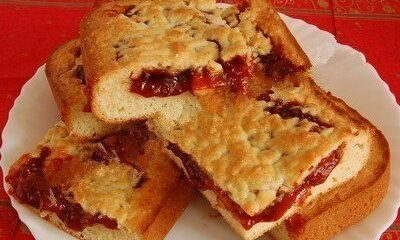

Trapus pyragas su uogiene: klasikinis desertas, kuris visada pavyksta
Kiekviena šeimininkė turi bent vieną receptą, kuris gelbsti tada, kai norisi greitai pagaminti ką nors skanaus prie arbatos. Dažnai tai...
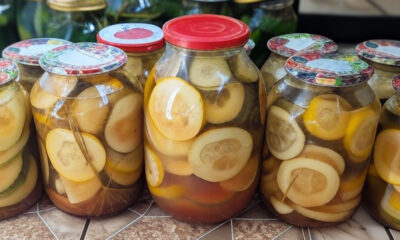

Mano gardžiausi marinuoti cukinijų griežinėliai su kečupu: ryškus, aromatingas ir tobulas receptas žiemai
Naminiai konservai yra ne tik būdas išsaugoti daržoves iki žiemos, bet ir tikras šeimos ritualas, perduodamas iš kartos į kartą....
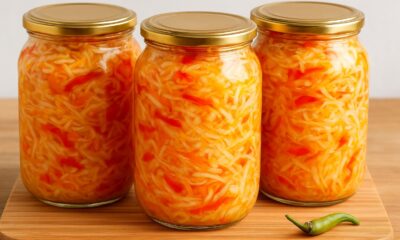

Traškios kopūstų salotos su daržovėmis žiemai: ryškus, aromatingas ir visada pavykstantis receptas
Namuose ruošiami daržovių konservai jau seniai yra ne tik būdas išsaugoti derlių, bet ir tam tikra tradicija, kuri sieja kartas....
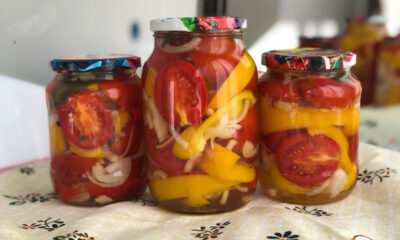

Marinuoti pomidorai su paprika aliejuje (3 litrų stiklainiams)
Marinuoti pomidorai su saldžiąja paprika ir svogūnais – tai puikus užkandis žiemai, kuris ne tik atrodo labai spalvingai stiklainiuose, bet...
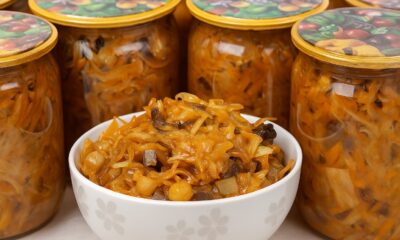

Grybų ir kopūstų troškinys „Solianka“ žiemai
Solianka su grybais ir kopūstais – tai sotus, aromatingas ir universalus patiekalas, kuris puikiai tinka žiemos atsargoms. Ji gali būti...


Naminis obuolių kompotas be konservantų – paprastas receptas žiemai
Šis natūralus obuolių kompotas yra puikus pasirinkimas tiems, kurie ieško švarios, nesudėtingos, sveikesnės alternatyvos parduotuviniams gėrimams. Kompotas ruošiamas be konservantų,...
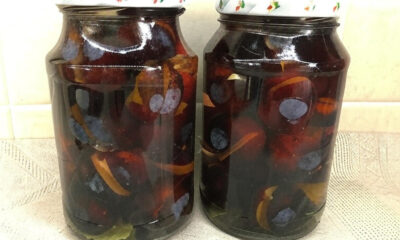

Marinuotos slyvos su česnaku „Slyvų delikatesas“
Šis receptas patiks mėgstantiems neįprastus derinius. Salstelėjusios, kvapnios, lengvai aštrios slyvos su česnaku – tai netikėta, tačiau nepaprastai gardi užkandėlė,...


Aromatinga barščių daržovių užpilo mišrainė žiemai – greitam ir sodriam burokėlių sriubos paruošimui
Barščių užpilo mišrainė – tai vienas praktiškiausių konservuotų namų gaminių žiemai. Ši daržovių bazė leidžia itin greitai ir paprastai paruošti...
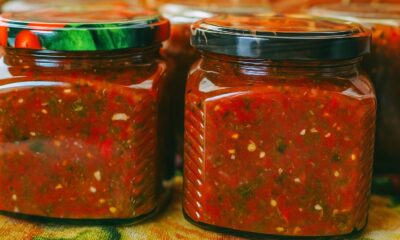

Naminis pomidorų padažas žiemai – universali užkanda ir pagardas
Šis padažas – tai ne tik skanus, bet ir labai praktiškas žiemos gaminys, kurį galima naudoti įvairiausiuose patiekaluose. Jis puikiai...


Trapūs riestainėliai su lašinių taukais ir grietine – klasikinis naminis kepinys
Tai vienas iš tų paprastų, bet labai nostalgiškų receptų, kurio skonis dažnai primena vaikystę. Tokie riestainėliai ypač tinka prie puodelio...
POPULIARU
-

 Receptai1 year ago
Receptai1 year agoGreitas ir purus obuolių pyragas: paprastas receptas per 45 minutes
-

 Receptai12 months ago
Receptai12 months agoBe galo skanūs varškės sausainiai per 5 minutes!
-

 Receptai1 year ago
Receptai1 year agoGardžioji daržovių mišrainė žiemai: vitaminų bomba tavo stalui
-

 Receptai5 months ago
Receptai5 months agoRauginti agurkai su degtine – kaip turguje. Patikimas receptas iš kartos į kartą
-
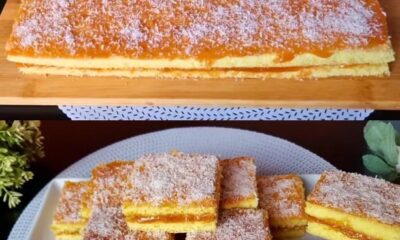
 Receptai1 year ago
Receptai1 year agoTirpstantys burnoje pyragaičiai per kelias minutes! – Receptas
-
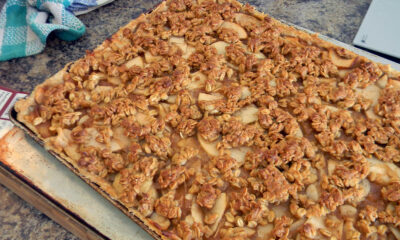
 Receptai1 year ago
Receptai1 year agoAvižų ir obuolių pyragas – sveika alternatyva be miltų
-

 Receptai4 months ago
Receptai4 months agoKaimiškos daržovių salotos žiemai
-
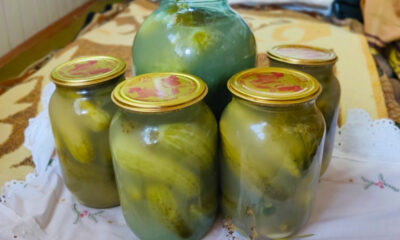
 Receptai5 months ago
Receptai5 months agoRauginti agurkai pagal mano anytą – traškūs, kvapnūs ir be jokio acto!

